
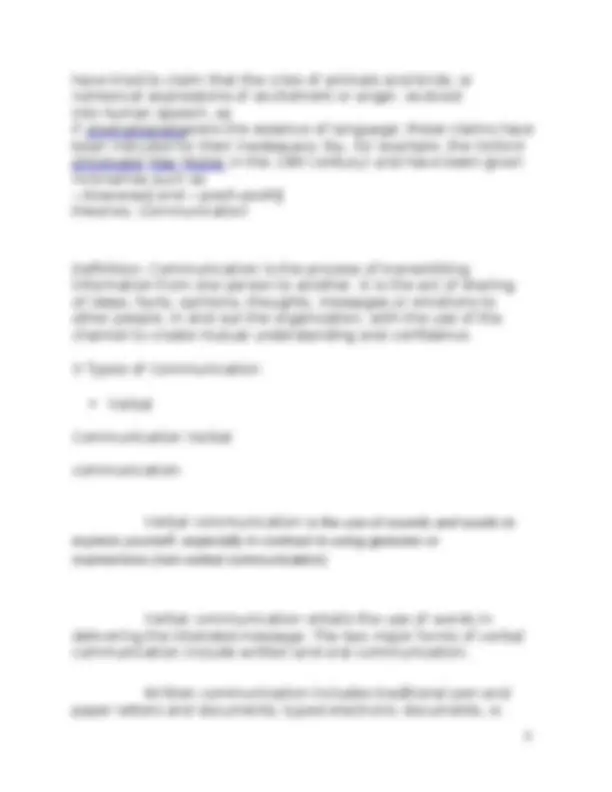

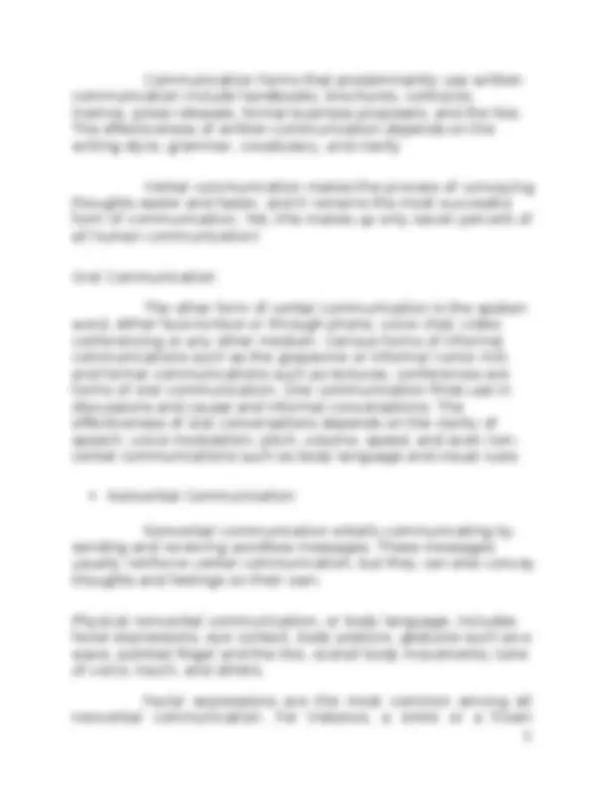

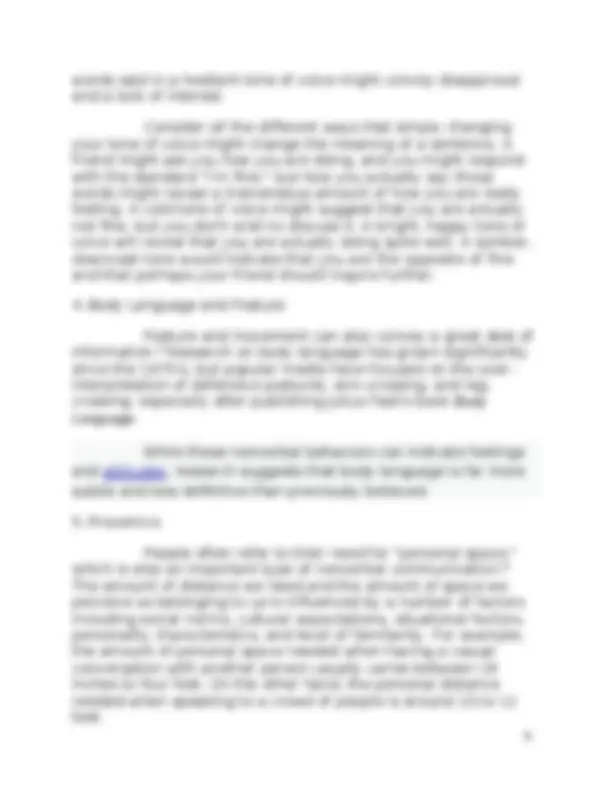

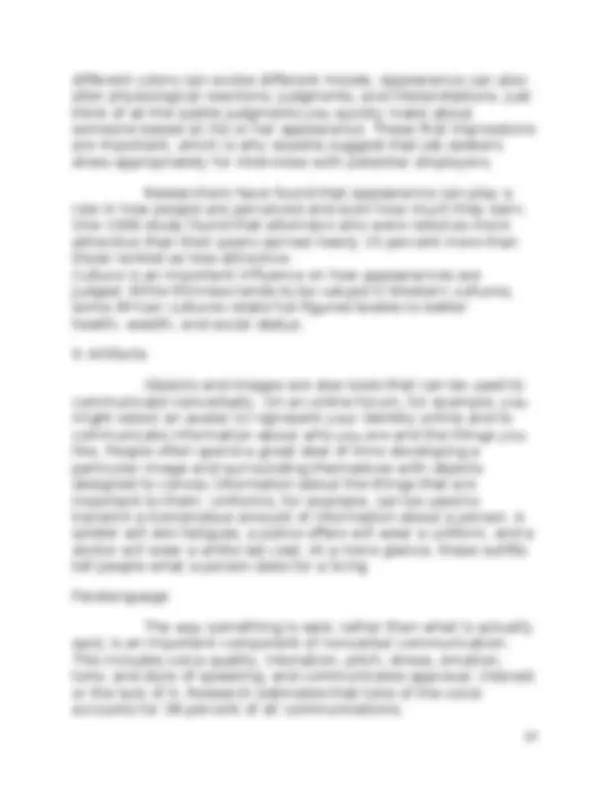

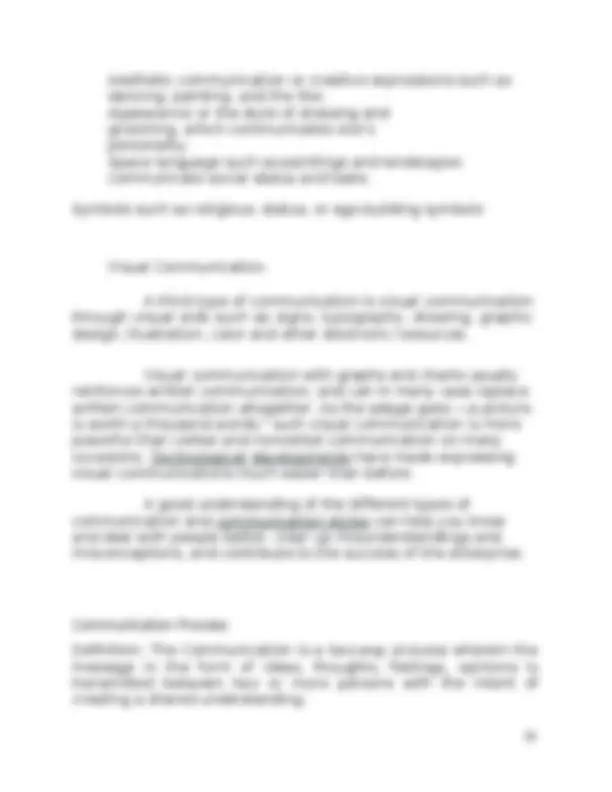

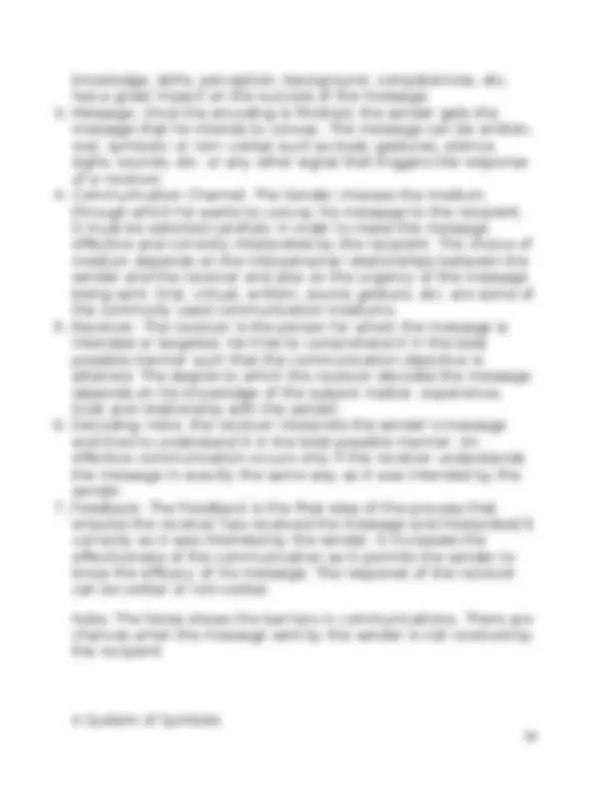

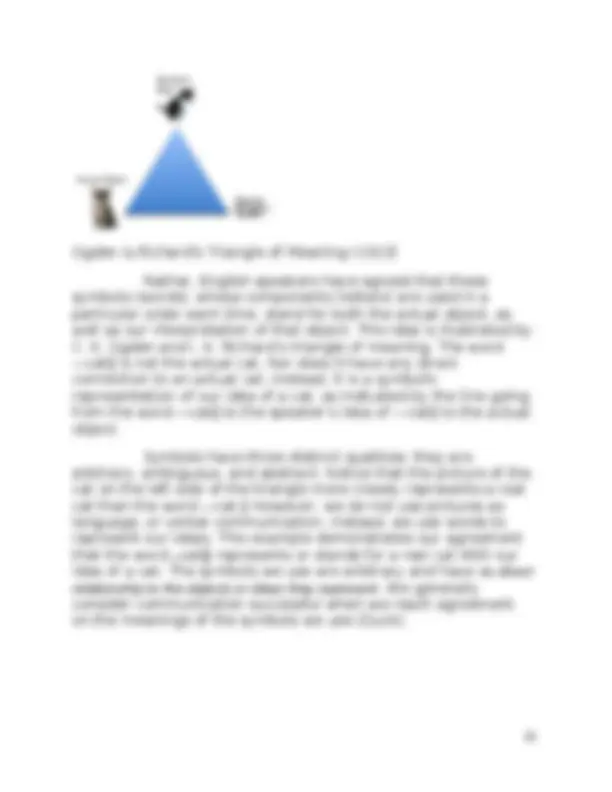

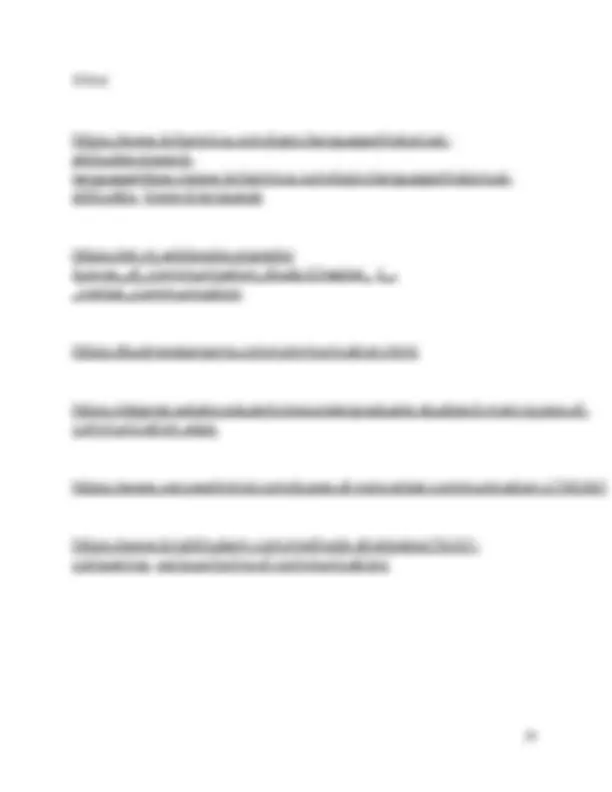



Study with the several resources on Docsity

Earn points by helping other students or get them with a premium plan


Prepare for your exams
Study with the several resources on Docsity

Earn points to download
Earn points by helping other students or get them with a premium plan
Community
Ask the community for help and clear up your study doubts
Discover the best universities in your country according to Docsity users
Free resources
Download our free guides on studying techniques, anxiety management strategies, and thesis advice from Docsity tutors
The basics of communication, including language and communication process. It also covers nonverbal communication, such as facial expressions, gestures, eye gaze, touch, appearance, and visual communication. The document defines communication as a two-way process of transmitting messages between two or more people with the intent of creating a shared understanding. It also explores the different types of communication and communication styles that can help people understand and deal with others better.
Typology: Summaries
1 / 24

This page cannot be seen from the preview
Don't miss anything!

















New Era University College of Communication No. 9 Central Avenue, New Era, Quezon City The Basic Communication A. Language And Communication B. Principle of Communication, Communication Process, System and Symbols ( GECPCO-18 MW 7:00 AM 8: AM ) Submitted by: 1 st^ Year / COC 1C BA COMM 19 Submitted to:
Lesson: The Basic Communication Topic : A. Language And Communication B. Principle of Communication, Communication Process, System and Symbols Definitions of language Many definitions of language have been proposed. Henry Sweet, an English phonetician and language scholar, stated: ―Language is the expression of ideas by means of speech-sounds combined into words. Words are combined into sentences, this combination answering to that of ideas into thoughts.‖ The American linguists Bernard Bloch and George L. Trager formulated the following definition: ―A language is a system of arbitrary vocal symbols by means of which a social group cooperates.‖ Any succinct definition of language makes a number of presuppositions and begs a number of questions. The first, for example, puts excessive weight on ―thought,‖ and the second uses ―arbitrary‖ in a specialized, though legitimate, way. The origin of language has never failed to provide a subject for speculation, and its inaccessibility adds to its fascination. Informed investigations of the probable conditions under which language might have originated and developed are seen in the late 18th-century essay of the German philosopher Johann Gottfried von Herder, ―Abhandlung über den Ursprung der Sprache‖ (―Essay on the Origin of Language‖), and in numerous other treatments. But people have tried to go farther, to discover or to reconstruct something like the actual forms and structure of the first language. This lies forever beyond the reach of science, in that spoken language in some form is almost certainly coeval with Homo sapiens. The earliest records of written language, the only linguistic fossils humanity can hope to have, go back no more than 4,000 to 5,000 years. Some people
mails, text chats, SMS and anything else conveyed through written symbols such as language. This type of communication is indispensable for formal business communications and issuing legal instructions.
Communication forms that predominantly use written communication include handbooks, brochures, contracts, memos, press releases, formal business proposals, and the like. The effectiveness of written communication depends on the writing style, grammar, vocabulary, and clarity Verbal communication makes the process of conveying thoughts easier and faster, and it remains the most successful form of communication. Yet, this makes up only seven percent of all human communication! Oral Communication The other form of verbal communication is the spoken word, either face-to-face or through phone, voice chat, video conferencing or any other medium. Various forms of informal communications such as the grapevine or informal rumor mill, and formal communications such as lectures, conferences are forms of oral communication. Oral communication finds use in discussions and causal and informal conversations. The effectiveness of oral conversations depends on the clarity of speech, voice modulation, pitch, volume, speed, and even non- verbal communications such as body language and visual cues. Nonverbal Communication Nonverbal communication entails communicating by sending and receiving wordless messages. These messages usually reinforce verbal communication, but they can also convey thoughts and feelings on their own. Physical nonverbal communication, or body language, includes facial expressions, eye contact, body posture, gestures such as a wave, pointed finger and the like, overall body movements, tone of voice, touch, and others. Facial expressions are the most common among all nonverbal communication. For instance, a smile or a frown
While nonverbal communication and behavior can vary dramatically between cultures, the facial expressions for happiness, sadness, anger, and fear are similar throughout body language, including facial expressions, account for 55 percent of all communication. Types of Non Verbal Communication
tone of voice, loudness, inflection, and pitch. Consider the powerful effect that tone of voice can have on the meaning of a sentence. When said in a strong tone of voice, listeners might interpret approval and enthusiasm. The same
Women tend to use touch to convey care, concern, and nurturance. Men, on the other hand, are more likely to use touch to assert power or control over others. The eyes play an important role in nonverbal communication and such things as looking, staring and blinking are important nonverbal behaviors. When people encounter people or things that they like, the rate of blinking increases and pupils dilate. Looking at another person can indicate a range of emotions including hostility, interest, and attraction. People also utilize eye gaze as a means to determine if someone is being honest. 6 Normal, steady eye contact is often taken as a sign that a person is telling the truth and is trustworthy. Shifty eyes and an inability to maintain eye contact, on the other hand, is frequently seen as an indicator that someone is lying or being deceptive.
different colors can evoke different moods. Appearance can also alter physiological reactions, judgments, and interpretations. Just think of all the subtle judgments you quickly make about someone based on his or her appearance. These first impressions are important, which is why experts suggest that job seekers dress appropriately for interviews with potential employers. Researchers have found that appearance can play a role in how people are perceived and even how much they earn. One 1996 study found that attorneys who were rated as more attractive than their peers earned nearly 15 percent more than those ranked as less attractive. Culture is an important influence on how appearances are judged. While thinness tends to be valued in Western cultures, some African cultures relate full-figured bodies to better health, wealth, and social status.
Other forms of nonverbal communication usually communicate one‘s personality. These include:
Simply, an act of conveying intended information and understanding from one person to another is called as communication. The
term communication is derived from the Latin word ―Communis‖ which means to share. Effective communication is when the message conveyed by the sender is understood by the receiver in exactly the same way as it was intended Communication Process The communication is a dynamic process that begins with the conceptualizing of ideas by the sender who then transmits the message through a channel to the receiver, who in turn gives the feedback in the form of some message or signal within the given time frame. Thus, there are seven major elements of communication process:
knowledge, skills, perception, background, competencies, etc. has a great impact on the success of the message.
Symbols are arbitrary representations of thoughts, ideas, emotions, objects, or actions used to encode and decode meaning (Nelson & Kessler Shaw). Symbols stand for, or represent, something else. For example, there is nothing inherent about calling a cat a cat.